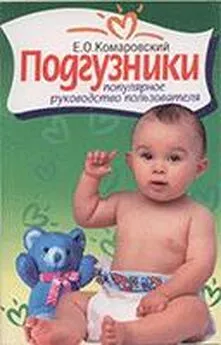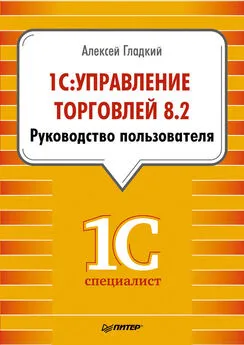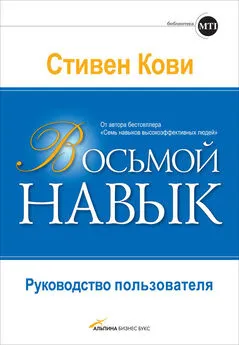Кристи Фанк - Грудь. Руководство пользователя [litres]
- Название:Грудь. Руководство пользователя [litres]
- Автор:
- Жанр:
- Издательство:Литагент 5 редакция «БОМБОРА»
- Год:2020
- Город:Москва
- ISBN:978-5-04-108737-1
- Рейтинг:
- Избранное:Добавить в избранное
-
Отзывы:
-
Ваша оценка:
Кристи Фанк - Грудь. Руководство пользователя [litres] краткое содержание
Грудь. Руководство пользователя [litres] - читать онлайн бесплатно ознакомительный отрывок
Интервал:
Закладка:
456
M. M. Grumbach, “Puberty: Ontogeny, Neuroendocrinology, Physiology, and Disorder,” Williams Textbook of Endocrinology (1998): 1509–1625.
457
S. J. Jordan, P. M. Webb, and A. C. Green, “Height, Age at Menarche, and Risk of Epithelial Ovarian Cancer,” Cancer Epidemiology, Biomarkers and Prevention 14 (2005): 2045–2048.
458
M. B. Pierce and D. A. Leon, “Age at Menarche and Adult BMI in the Aberdeen Children of the 1950s Cohort Study,” American Journal of Clinical Nutrition 82 (2005): 733–798.
459
M. B. Pierce, D. Kuh, and R. Hardy, “The Role of BMI across the Life Course in the Relationship between Age at Menarche and Diabetes, in a British Birth Cohort,” Diabetic Medicine 29, no. 5 (May 2012): 600–603.
460
G. C. Patton and R. Viner, “Pubertal Transitions in Health,” The Lancet 369, no. 9567 (March 2007): 1130–1139.
461
M. B. Pierce, D. Kuh, and R. Hardy, “Role of Lifetime Body Mass Index in the Association between Age at Puberty and Adult Lipids: Findings from Men and Women in a British Birth Cohort,” Annals of Epidemiology 20, no. 9 (September 2010): 676–682.
462
M. R. Palmert et al., “Is Obesity an Outcome of Gonadotropin-Releasing Hormone Agonist Administration? Analysis of Growth and Body Composition in 110 Patients with Central Precocious Puberty,” Journal of Clinical Endocrinology and Metabolism 84, no. 12 (1999): 4480–4488; F. Massart et al., “How Do Environmental Estrogen Disruptors Induce Precocious Puberty?” Minerva Pediatrica 58, no. 3 (2006): 247–254.
463
J. Dratva et al., “Is Age at Menopause Increasing across Europe? Results on Age at Menopause and Determinants from Two Population-Based Studies,” Menopause 16, no. 2 (2009): 385–394.
464
J. R. Wisbey et al., “Natural History of Breast Pain,” The Lancet 322, no. 8351 (1983): 672–674.
465
Collaborative Group on Hormonal Factors in Breast Cancer, “Menarche, Menopause, and Breast Cancer Risk: Individual Participant Meta-analysis, Including 118,964 Women with Breast Cancer from 117 Epidemiological Studies,” The Lancet Oncology 13, no. 11 (2012): 1141–1151.
466
G. Copeland et al., Cancer in North America: 2008–2012. Volume One: Combined Cancer Incidence for the United States, Canada and North America (Springfield, IL: North American Association of Central Cancer Registries, 2015).
467
L. X. Clegg et al., “Cancer Survival among US Whites and Minorities: A SEER (Surveillance, Epidemiology and End Results) Program Population-Based Study,” Archives of Internal Medicine 162, no. 17 (September 2002): 1985–1993.
468
American Cancer Society, “Cancer Facts & Figures for African Americans, 2016–2018,” открыто 4 ноября 2017 года, https://www.cancer.org/content/dam/cancer-org/research/cancer-facts-and-statistics/cancer-facts-and-figures-for-african-americans/cancer-facts-and-figures-for-african-americans-2016-2018.pdf.
469
D. Huo et al., “Comparison of Breast Cancer Molecular Features and Survival by African and European Ancestry in The Cancer Genome Atlas.” JAMA Oncology , accessed December 10, 2017, doi: 10.1001/jamaoncol.2017.0595.
470
R. T. Chlebowski et al., “Ethnicity and Breast Cancer: Factors Influencing Differences in Incidence and Outcome,” Journal of the National Cancer Institute 97, no. 6 (March 2005): 439–448; A. Naeim et al., “Do Age and Ethnicity Predict Breast Cancer Treatment Received? A Cross-Sectional Urban Population – Based Study, Breast Cancer Treatment: Age and Ethnicity,” Critical Reviews in Oncology-Hematology 59, no. 3 (September 2006): 234–242; G. Maskarinec et al., “A Longitudinal Investigation of Mammographic Density: The Multiethnic Cohort,” Cancer Epidemiology, Biomarkers and Prevention 15, no. 4 (April 2006): 732–739; C. P. Kaplan et al., “Breast Cancer Risk Reduction Options: Awareness, Discussion, and Use among Women from Four Ethnic Groups,” Cancer Epidemiology, Biomarkers and Prevention 15, no. 1 (January 2006): 162–166; L. Tillman et al., “Breast Cancer in Native American Women Treated at an Urban-Based Indian Health Referral Center 1982–2003,” American Journal of Surgery 190, no. 6 (December 2005): 895–902; R. Nanda et al., “Genetic Testing in an Ethnically Diverse Cohort of High-Risk Women: A Comparative Analysis of BRCA1 and BRCA2 Mutations in American Families of European and African Ancestry,” Journal of the American Medical Association 294, no. 15 (2005): 1925–1933; Hunt et al., “Increasing Black: White Disparities in Breast Cancer Mortality in the 50 Largest Cities in the US,” Cancer Epidemiology 38, no. 2 (April 2014): 118–123; S. Percac-Lima et al., “Decreasing Disparities in Breast Cancer Screening in Refugee Women Using Culturally Tailored Patient Navigation,” Journal of General Internal Medicine 28 (2013): 1463–1468.
471
J. S. Lawson, “The Link between Socioeconomic Status and Breast Cancer – a Possible Explanation,” Scandinavian Journal of Public Health 27, no. 3 (September 1999): 203–205.
472
S. A. Robert et al., “Socioeconomic Risk Factors for Breast Cancer: Distinguishing Individual-and Community-level Effects,” Epidemiology 15, no. 4 (July 2004): 442–450.
473
Centers for Disease Control and Prevention (CDC), “Breast Cancer Screening and Socioeconomic Status – 35 Metropolitan Areas, 2000 and 2002,” Morbidity and Mortality Weekly Report 54, no. 39 (October 2005): 981–985.
474
A. Downing et al., “Socioeconomic Background in Relation to Stage at Diagnosis, Treatment and Survival in Women with Breast Cancer,” British Journal of Cancer 96, no. 5 (March 2007): 836–840. L. E. Rutqvist and A. Bern, “Socioeconomic Gradients in Clinical Stage at Presentation and Survival among Breast Cancer Patients in the Stockholm Area 1977–1997,” International Journal of Cancer 119, no. 6 (September 2006): 1433–1439.
475
Американская государственная программа медицинской помощи нуждающимся.
476
R. Shi, “Effects of Payer Status on Breast Cancer Survival: A Retrospective Study,” BMC Cancer 15 (2015): 211.
477
L. A. Newman et al., “Impact of Breast Carcinoma on African-American Women: The Detroit Experience,” Cancer 91, no. 9 (May 2001): 1834–1843.
478
H. J. Baer et al., “Adult Height, Age at Attained Height, and Incidence of Breast Cancer in Premenopausal Women,” International Journal of Cancer 119, no. 9 (November 2006): 2231–2235.
479
J. M. Petrelli et al., “Body Mass Index, Height, and Postmenopausal Breast Cancer Mortality in a Prospective Cohort of US Women,” Cancer Causes and Control 13, no. 4 (May 2002): 325–332.
480
R. G. Ziegler, “Anthropometry and Breast Cancer,” Journal of Nutrition 127, no. 5 (May 1997): 924S–928S.
481
Hormones, the Endogenous, and Breast Cancer Collaborative Group, “Insulin-like Growth Factor 1 (IGF1), IGF Binding Protein 3 (IGFBP3), and Breast Cancer Risk: Pooled Individual Data Analysis of 17 Prospective Studies,” The Lancet Oncology 11, no. 6 (2010): 530–542.
482
R. Pacifici, “Cytokines, Estrogen, and Postmenopausal Osteoporosis – the Second Decade,” Endocrinology 139, no. 6 (June 1998): 2659–2661.
483
Y. Zhang et al., “Bone Mass and the Risk of Breast Cancer among Postmenopausal Women,” New England Journal of Medicine 336, no. 9 (February 1997): 611–617; J. A. Cauley et al., “Bone Mineral Density and Risk of Breast Cancer in Older Women: The Study of Osteoporotic Fractures. Study of Osteoporotic Fractures Research Group,” Journal of the American Medical Association 276, no. 17 (November 1996): 1404–1408.
484
I. Persson et al., “Reduced Risk of Breast and Endometrial Cancer among Women with Hip Fractures,” Cancer Causes and Control 5, no. 6 (November 1994): 523–528; H. Olsson and G. Hagglund, “Reduced Cancer Morbidity and Mortality in a Prospective Cohort of Women with Distal Forearm Fractures,” American Journal of Epidemiology 136, no. 4 (August 1992): 422–427.
485
N. F. Boyd et al., “Mammographic Density: A Hormonally Responsive Risk Factor for Breast Cancer,” Journal of the British Menopause Society 12, no. 4 (December 2006): 186–193; M. P. V. Shekhar et al., “Breast Stroma Plays a Dominant Regulatory Role in Breast Epithelial Growth and Differentiation: Implications for Tumor Development and Progression,” Cancer Research 61, no. 4 (2001): 1320–1326.
486
T. M. Kolb, J. Lichy, and J. H. Newhouse, “Comparison of the Performance of Screening Mammography, Physical Examination, and Breast U. S. and Evaluation of Factors that Influence Them: An Analysis of 27,825 Patient Evaluations,” Radiology 225, no. 1 (2002): 165–175.
487
N. F. Boyd et al., “Quantitative Classification of Mammographic Densities and Breast Cancer Risk: Results from the Canadian National Breast Screening Study,” Journal of the National Cancer Institute 87, no. 9 (May 1995): 670–675; R. M. Tamimi et al., “Endogenous Hormone Levels, Mammographic Density, and Subsequent Risk of Breast Cancer in Postmenopausal Women,” Journal of the National Cancer Institute 99, no. 15 (August 2007): 1178–1187.
488
J. A. Knight et al., “Macronutrient Intake and Change in Mammographic Density at Menopause: Results from a Randomized Trial,” Cancer Epidemiology, Biomarkers and Prevention 8, no. 2 (February 1999): 123–128; G. A. Greendale et al., “Effects of Estrogen and Estrogen-progestin on Mammographic Parenchymal Density. Postmenopausal Estrogen/Progestin Interventions (PEPI) Investigators,” Annals of Internal Medicine 130, no. 4 (February 1999): 262–269.
489
G. Ursin et al., “Can Mammographic Densities Predict Effects of Tamoxifen on the Breast?” Journal of the National Cancer Institute 88, no. 2 (January 1996): 128–129.
490
A. McTiernan et al., “Estrogen-Plus-Progestin Use and Mammographic Density in Postmenopausal Women: Women’s Health Initiative Randomized Trial,” Journal of the National Cancer Institute 97, no. 18 (2005): 1366–1376.
491
J. Cuzick et al., “Tamoxifen-Induced Reduction in Mammographic Density and Breast Cancer Risk Reduction: A Nested Case-Control Study,” Journal of the National Cancer Institute 103, no. 9 (2011): 744–752.
Читать дальшеИнтервал:
Закладка:
![Обложка книги Кристи Фанк - Грудь. Руководство пользователя [litres]](/books/1062698/kristi-fank-grud-rukovodstvo-polzovatelya-litre.webp)









